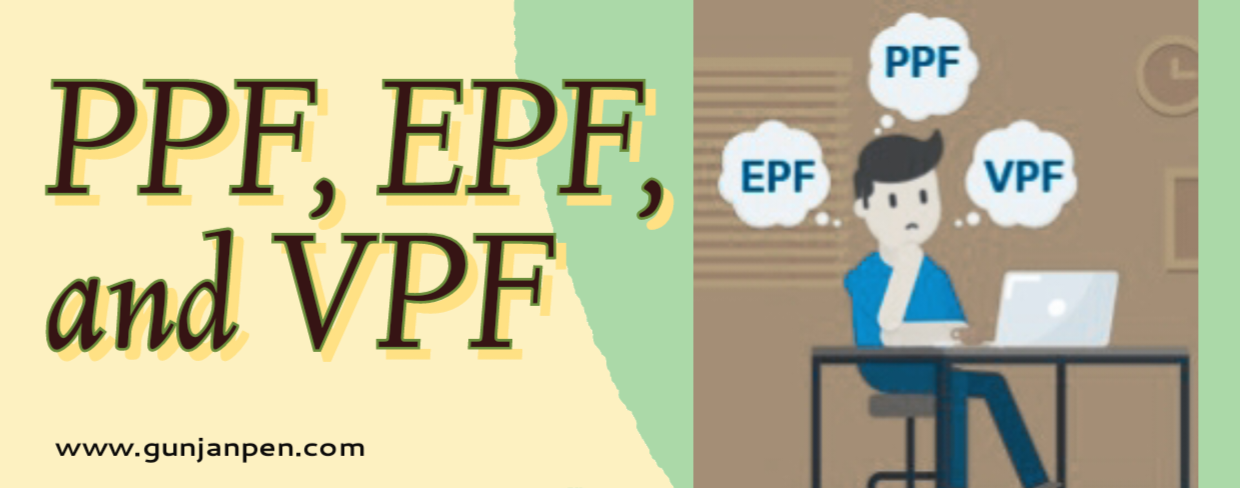Comparing Taxation of PPF, EPF, and VPF
PPF, EPF, and VPF are three prominent government-backed retirement schemes in India, each functioning distinctively in terms of interest rates, taxes, and withdrawal norms. Depending on your financial goals, eligibility, liquidity needs, investment horizon, and return expectations, these funds hold varying roles.

Taxation is a pivotal factor in choosing a suitable provident fund, particularly concerning PPF and VPF, as EPF is typically mandatory for employees across organizations. Comparing their taxation aspects could aid in decision-making.
Public Provident Fund (PPF):
Managed by the Indian government, PPF guarantees both principal and interest with sovereign backing. It requires a 15-year lock-in period and qualifies as a popular tax-saving investment under Section 80C.
PPF offers some liquidity through premature withdrawal and loans against it. Interest rates are aligned with government bond yields, currently at 7.1% p.a.
One significant advantage of PPF pertains to taxation. It falls under the EEE (exempt, exempt, exempt) category. This means that the invested amount, interest earned, and maturity proceeds are all tax-exempt.
Furthermore, Section 80C allows tax deductions of up to Rs 1.5 lakh annually for the amount invested in PPF.
When it comes to planning for retirement, understanding the taxation aspects of different provident funds becomes crucial. In India, three major government-backed options stand out: Public Provident Fund (PPF), Employee Provident Fund (EPF), and Voluntary Provident Fund (VPF). Let’s delve into a comprehensive analysis of how these funds are taxed, aiding you in making an informed decision.
TCS Xplore: Unleashing the Power of Learning and Growth-2023
Public Provident Fund (PPF)
Managed by the government, PPF is a long-term savings scheme. It carries a 15-year lock-in period and offers tax benefits under Section 80C. What sets PPF apart is its EEE (exempt, exempt, exempt) tax status. This means that not only the investment amount but also the interest earned and the maturity proceeds are tax-free.
Additionally, investors can claim deductions up to Rs 1.5 lakh annually for the amount invested in PPF, further enhancing its appeal as a tax-saving instrument.
Employee Provident Fund (EPF)
For the majority of Indians who are salaried, EPF contributions are required. Contributions are made to this fund, which is meant to act as a retirement corpus, by both companies and employees. Section 80C of the tax code allows for a tax deduction for the employee’s EPF contribution.
However, depending on when a withdrawal is made, different EPF withdrawals are taxed differently. After five years of continuous service, the withdrawal is tax-free. It is taxable if removed before five years have passed. If the withdrawal is made prior to five years, the interest received on the EPF is likewise taxable.
Voluntary Provident Fund (VPF)
Employees are permitted to make additional retirement contributions through VPF over and above the required EPF contributions. VPF contributions, like EPF contributions, are deductible from income under Section 80C. VPF payments help to lower the taxable income even though the interest earned on them is taxable.
VPF provides flexibility by letting individuals choose the amount of their supplementary contribution. Despite not having the same EEE tax status as PPF, VPF is nevertheless a desirable alternative for anyone wishing to enhance their retirement savings due to the tax deduction advantages.
TCS Xplore: Unleashing the Power of Learning and Growth-2023
Finally, because each provident fund—PPF, EPF, and VPF—has unique tax ramifications, they are each appropriate in a variety of financial circumstances. PPF excels because to its EEE tax status and high degree of flexibility, whilst EPF delivers required savings with tax advantages after a specific amount of time. In contrast, VPF enables voluntary donations that lower taxable income. Consider your financial goals, risk tolerance, and the tax implications that will help you achieve your objectives when selecting a provident fund.
